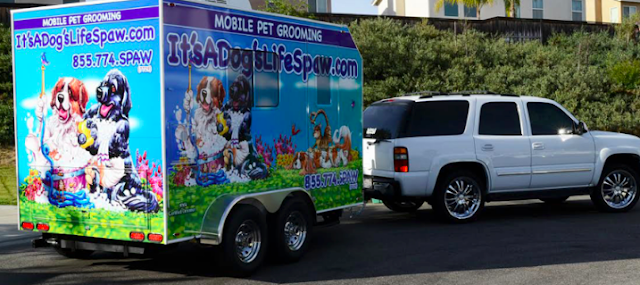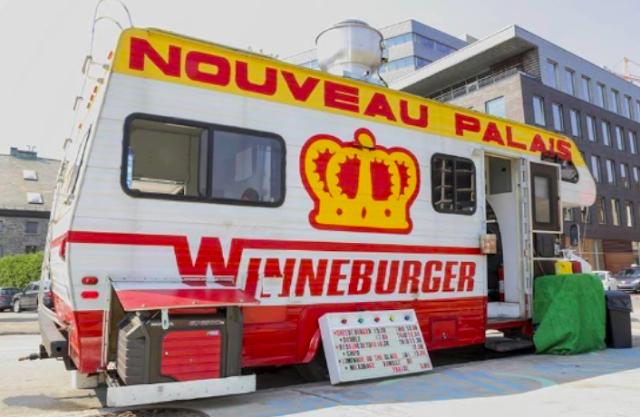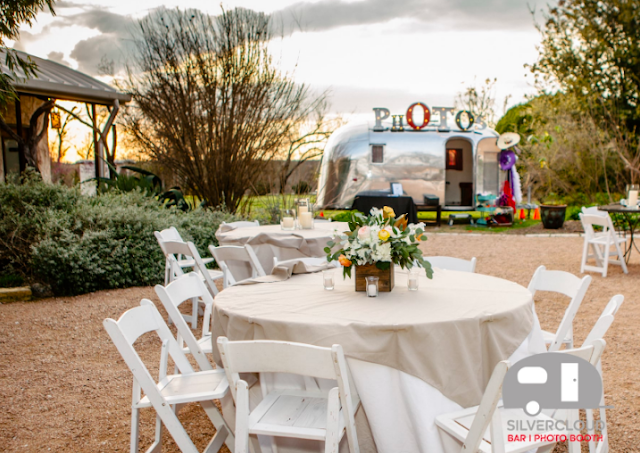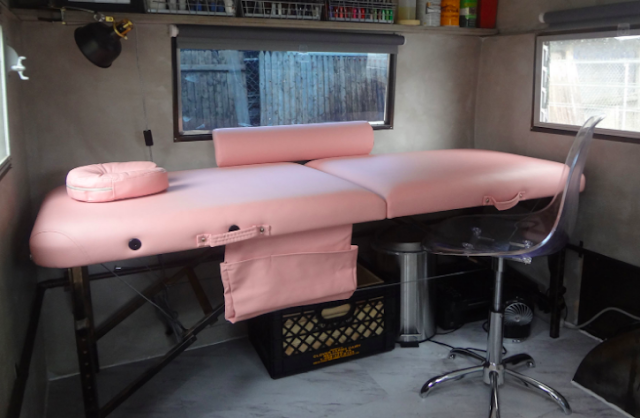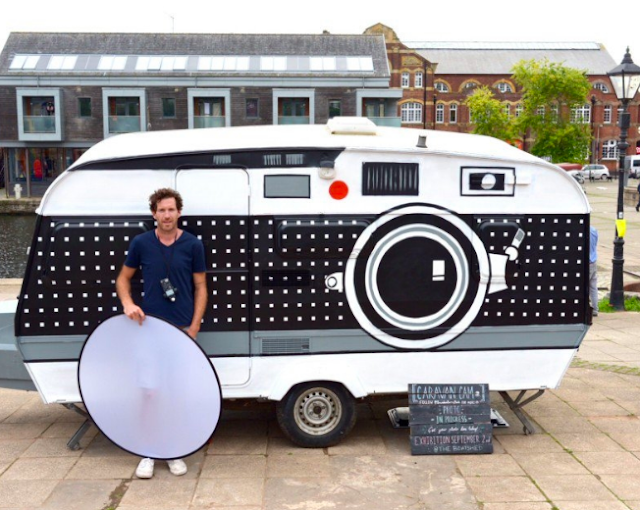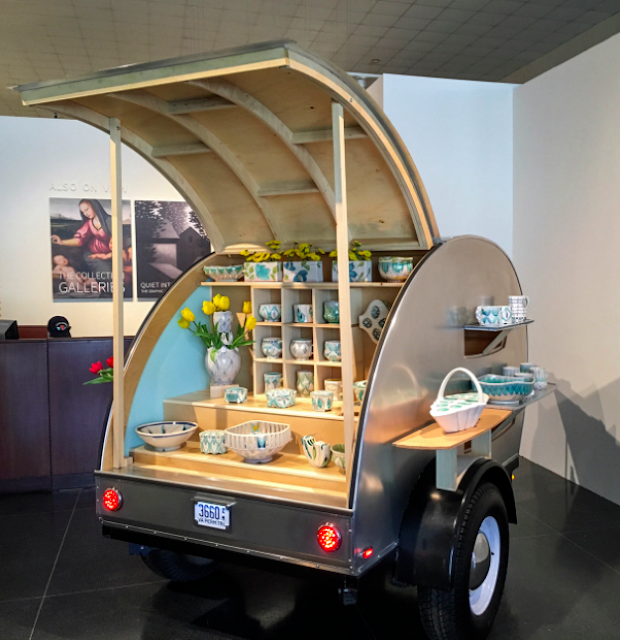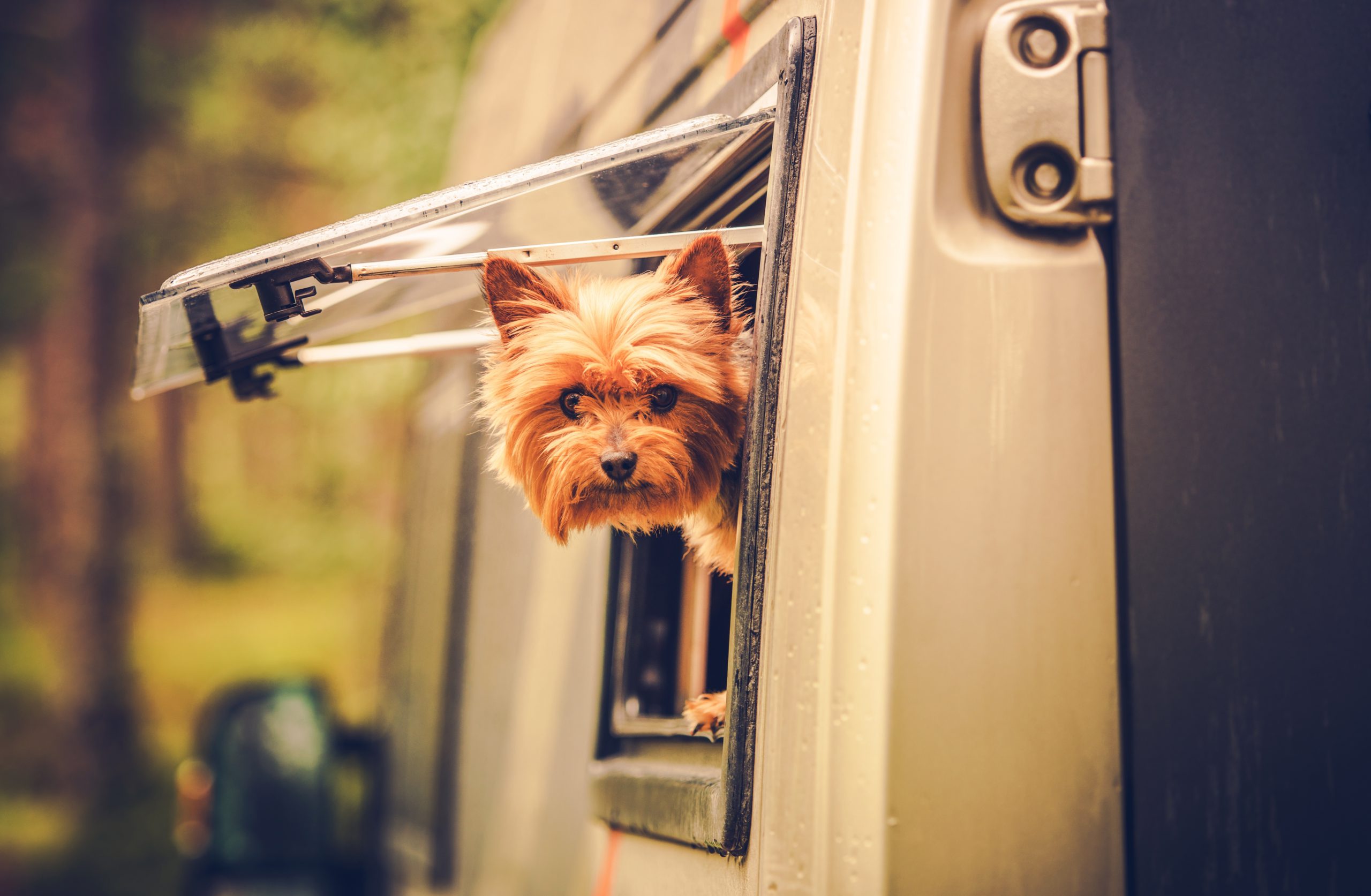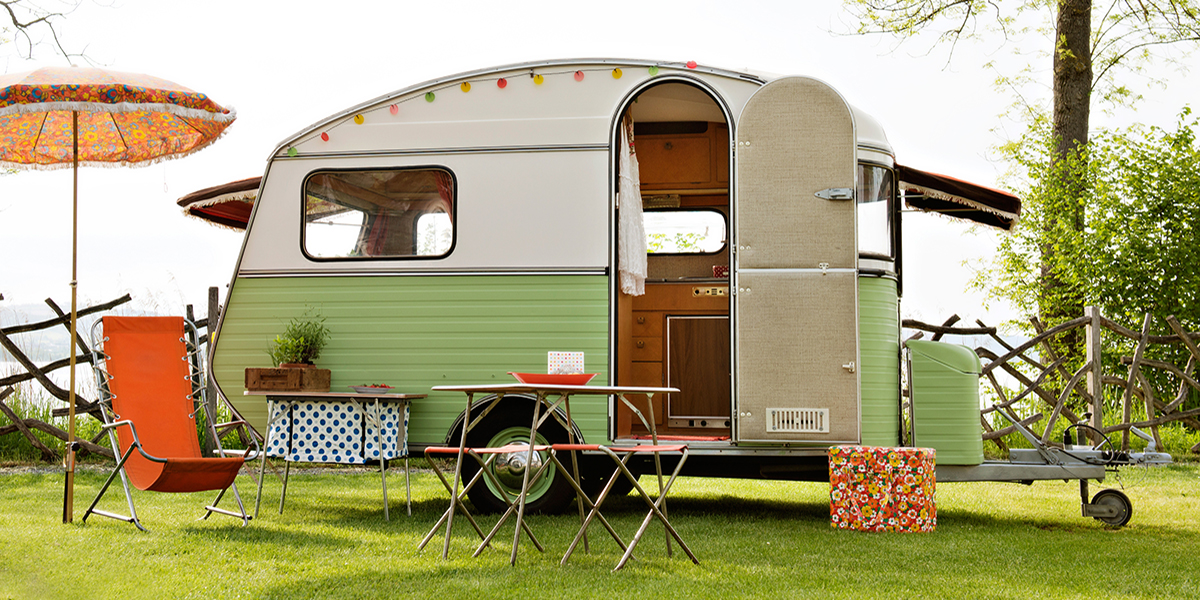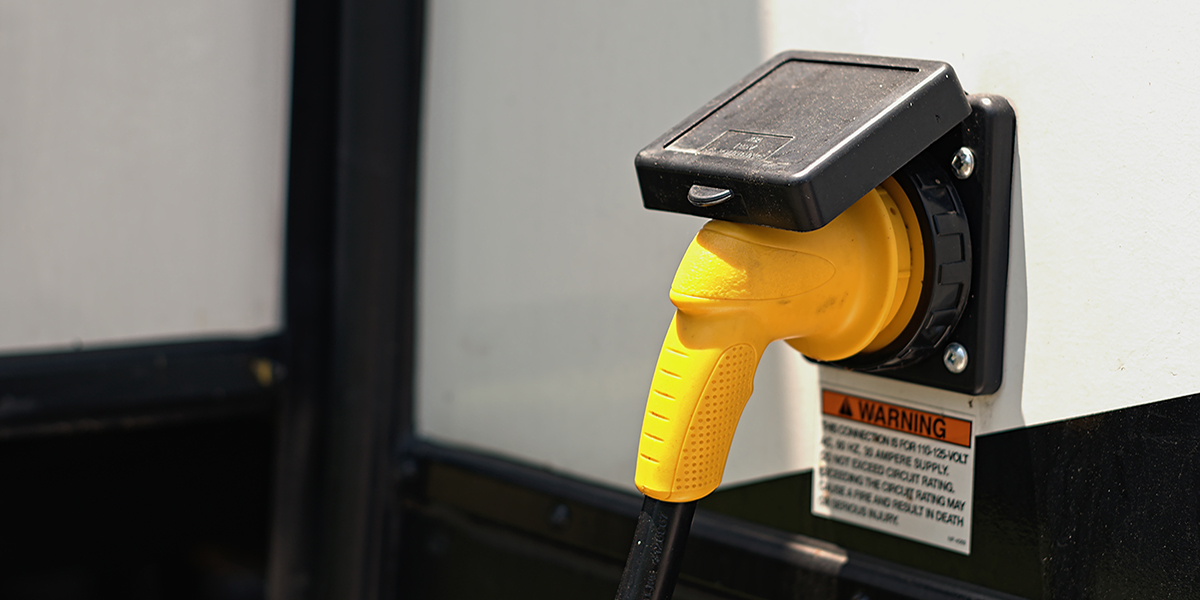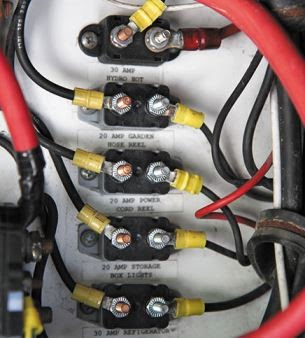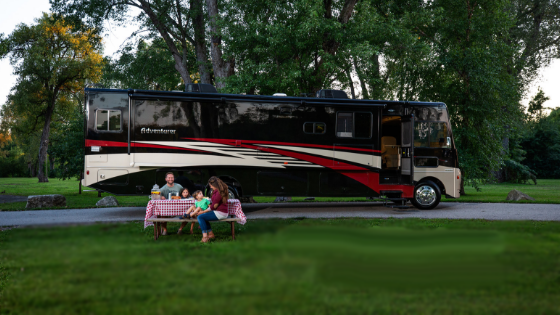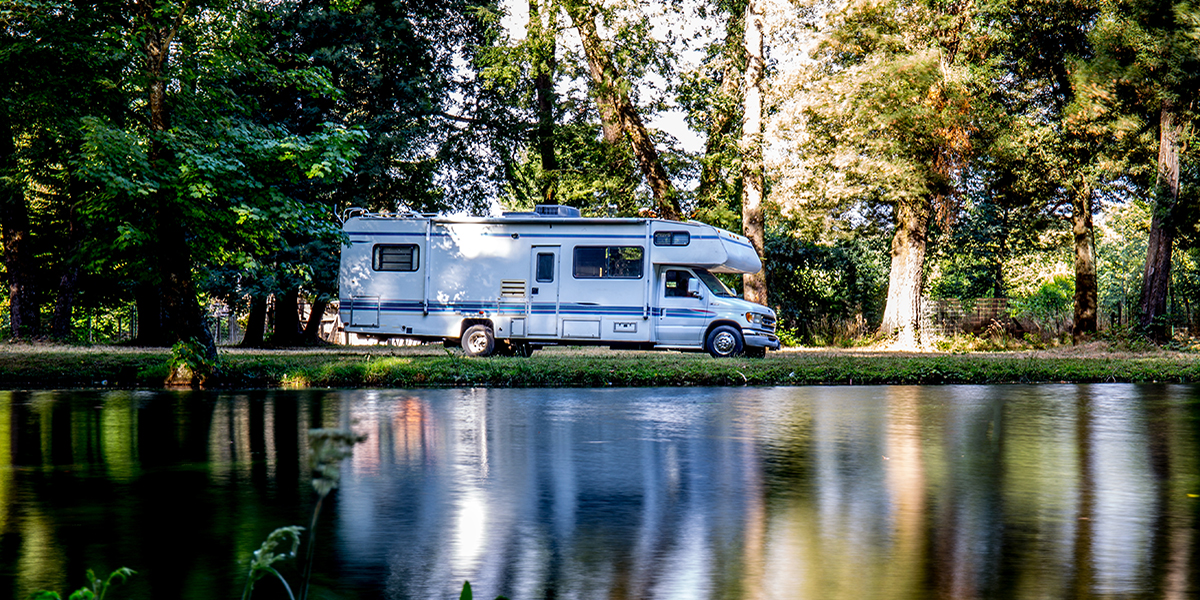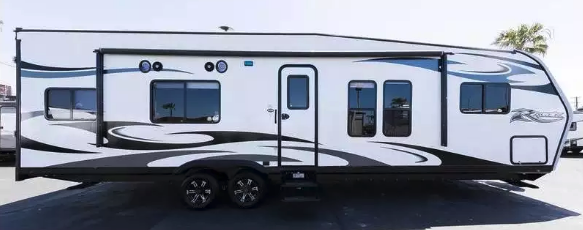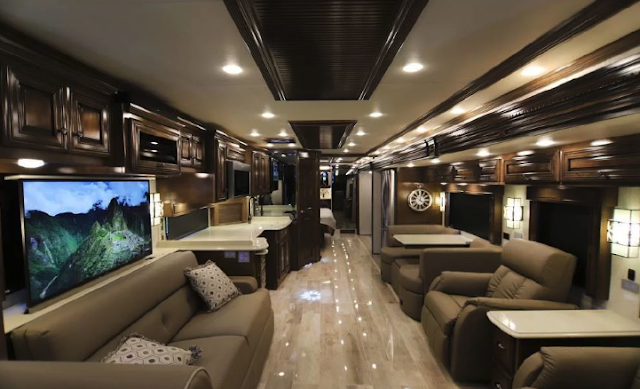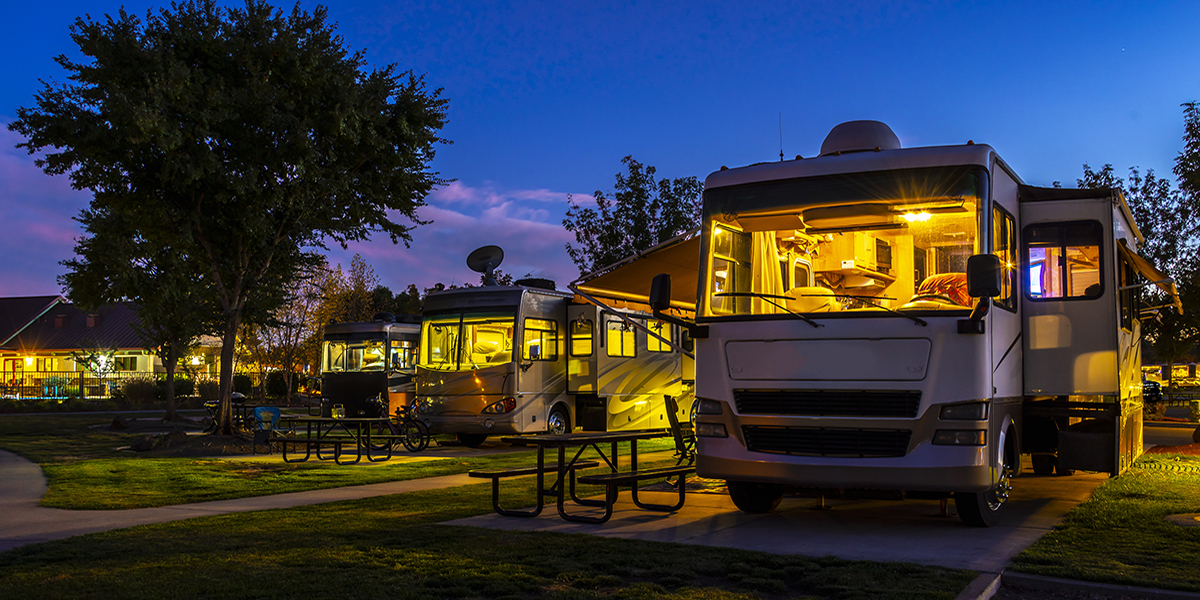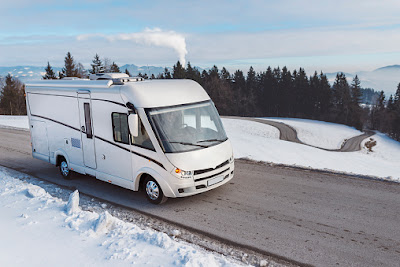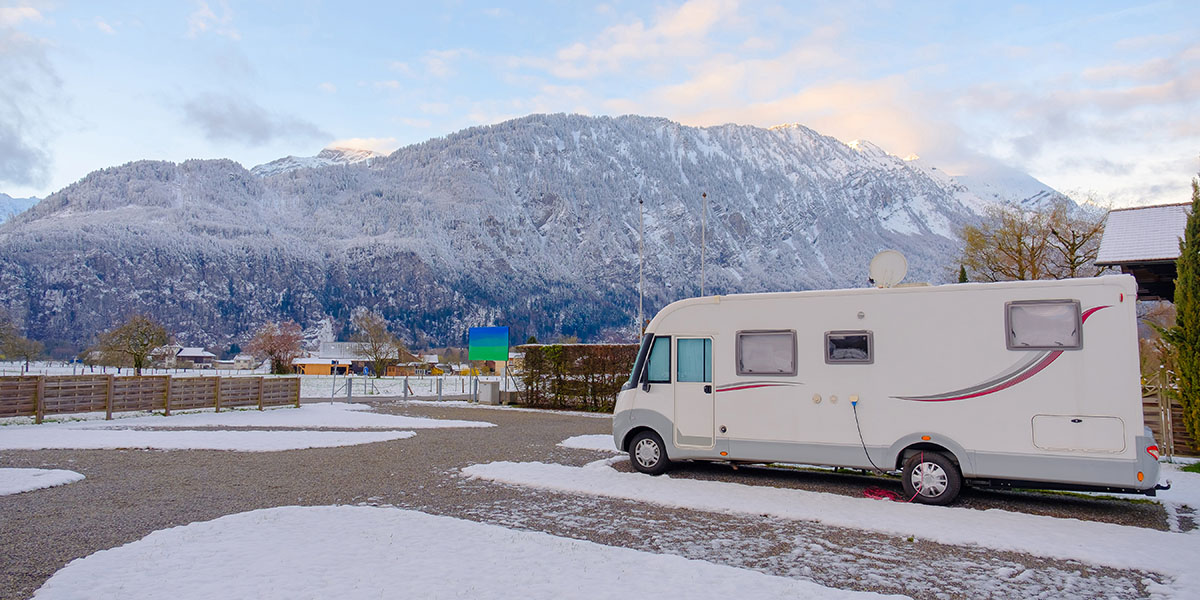Long gone are the days of small businesses sticking to brick and mortar storefronts. Many creative entrepreneurs have decided to take their businesses out on the road… in their RVs! We’ve compiled a list of a few genius businesses that are all fully functioning out of campers, trailers, and motorhomes. These businesses will delight, surprise, and might even inspire you.
Check out a few of our favorite mobile businesses below.
Image: J.D. Luxe Fashion
Brick and mortar boutiques will become a thing of the past with designers like J.D. Luxe Fashion going mobile. Their flagship “truck and mortar” store opened its doors in 2011 in beautiful Woodland Hills, CA to offer customers a one-of-a-kind shopping experience.
Now you don’t need to visit the closest shopping mall to find the hottest trends in fashion. This mobile boutique offers California locals a unique (and chic) shopping experience on wheels. While they do run storefront locations, J.D. Luxe swept up media attention on the streets of Los Angeles and at festivals like Coachella. Their eye for design, the mobility of their store, and online shop makes J.D. Luxe Fashion a competition for standalone fashion entrepreneurs everywhere!
Image: It’s a Dog’s Life Spaw
We’d be remiss if we didn’t include a business having something to do with animals in our RV businesses piece, and we didn’t have to look far – It’s a Dogs Life Spaw made us fall in love with their mission of providing a traveling, tail-wagging worthy grooming experience for West Coast pups! Kristi, creator of the “Spaw,” has loved animals as long as she can remember. No matter what the situation, every time she saw a stray dog, she brought it home with her. Over the course of her lifetime, she’s owned and raised a number of other pets, including horses, and exotic species.
It didn’t take her long to realize that her passions were driving her to commit to a future of full-time employment with pets. More than anything, Kristi loves spending time with individual pets, getting to know their unique personalities, characteristics, and tendencies. Her website reflects her feelings that “All pets are truly a special soul that deserves nothing but the best.”
Having graduated from a licensed academy of pet grooming and styling from Amber Lewin, a master certified groomer, Kristi is well-taught in not only styling, but also CPR and first aid. She presents with IPG (International Professional Groomer) certification, and notes that her philosophy is to “treat all her clients as if they were her own pet.”
The Spaw itself is state-of-the-art, and comes fully equipped with warm water, climate-controlled mani areas, and top-of-line amenities with zero cages or crates. It’s designed to provide not only a bathing experience, but a relaxation, stress-relieving (“Spaw”) experience for the animals, too – so the open, comfortable environment makes for just that.
Image: Winneburger
What do you get when you mix burgers with classic Winnebago vibes? Winneburger, of course. Based out of Montreal, the Winneburger is a fully-equipped traveling kitchen, operated by the popular local restaurant Nouveau Palais. Functioning out of a 1980s revamped Winnebago, it is designed to blend vintage vibes and decor with modern, freshly produced grub.
Always including a veggie-friendly option with their meals, their goal is to provide all customers with a memorable, unique cuisine experience. Owners Gita Seaton, Mary Martha Campbell, and Jacques Seguin are the seasoned chefs and restaurant business experts behind the small business and noted a few go-to items on the Winneburger’s menu, including kettle chips, homemade lemonade and iced tea, and ‘old-fashioned’ milkshakes.
Their famed, sweet challah buns make their burgers famous, and nothing compares to these key dishes, such as the Mushroom Burger (imagine a breaded, fried Portabello cap- stuffed to the brim with cheese, then placed on a challah bun) with all the fixings.
Image: Silvercloud Trailer Events
In need of a photographer for your event? Why not mix it up and rent out the Airstream Photo Booth curated by creative entrepreneurs Yvonne and Chris Johnson?
Based out of the Austin, TX area, Yvonne and Chris are both experienced in the wedding photography industry, and noticed a popular trend developing in the industry: rentable photo booths. Hoping to offer an individualized spin on this trend, they aligned this interest with Texas’ popular affinity for Airstreams. Switching up the traditional backdrop of large events, regardless of whether it be a wedding or festival, the Airstream Photo Booth experience comes fully equipped with fun, engaging props for dress-up, and the company offers both a full-size Airstream and smaller sized ‘Bambi’ trailer for smaller-scale events.
Image: Ink Minx
Tattoo culture is often a male-dominated space, but Shanzey Afzal had a plan to create change. Shanzey is a 26-year-old tattoo artist who converted a 1963 Shasta trailer into a mobile tattoo studio called Ink Minx. The mobile tattoo studio isn’t your average parlor, it caters to a specific audience – women. Shanzey was inspired at a young age by henna tattooing, which is a tradition from her Pakistani culture. The inspiration turned into something more and she began a tattoo apprenticeship at age 21, becoming a licensed artist soon after.
As she observed the tattoo industry during her apprenticeship, she came to find that it wasn’t always an inclusive place for women so she made it her mission to create an inclusive and safe space for women to express their creativity and participate in tattoo culture. Ink Minx might be located in a small trailer, but it is packed with a lot of heart. The trailer includes just the tattoo basics like one tattoo table, a counter station, fold-out desks, and a few other odds and ends required to get the job done.
The pink interior gives off a feminine and welcoming vibe to anyone about to make a tattoo commitment. One of the main reasons Ink Minx is a mobile unit is that Shanzey’s mission is to empower women across the country. Shanzey has recently traveled up and down the East Coast to tattoo women and plans on adding additional stops (including music festivals) in the near future.
Image: Home Crux
Brendan Barry attended art school in England, but found out pretty early on that he quite frankly “wasn’t very good at art”. He began getting into photography and years later received his master’s degree and later started teaching the subject.
Barry has built a variety of handmade cameras in the past but started thinking outside of the box – or should we say camera. He was inspired to make a camera where people would be physically invited into the process of photography. That’s when the Caravan Camera was born.
The Caravan Camera is an RV converted into a working camera obscura. From buying the unit to having it fully completed took roughly 2-3 weeks. Individuals can stand outside of the RV to get their photograph taken by the caravan. The inside of the camera also hosts a darkroom where the film is then developed.
Barry has grand plans for the Caravan Camera, including taking it to schools, hospitals, and community groups to excite and engage people in the process of photography. He plans on building a bigger camera in the future that will be wheelchair accessible so a variety of people can appreciate the art of photography.
Image: Andrea Denniston Ceramics
Andrea Denniston is a studio potter based in Virginia who decided to get creative with her art show display. She entered the craft show world and wanted to find a way to make the most of her allotted booth space, that’s when she began researching trailers. During the summer of 2015, she designed a chassis and commissioned outside assistance to make her dream mobile display come to life. Her mobile gallery is a 4×6 foot teardrop trailer that is cute as a button, yet still very practical for her needs.
Denniston loves pottery and that love shines through each of her creations. Her goal is to make pottery that will find its way into someones home and works to create unique and engaging objects. She enjoys working with a bright color palette and her mobile gallery highlights her work in a way that’s incredibly pleasing to the eye.
The display has a hatchback style opening on the back of the trailer complete with a variety of shelves to securely hold and protect her stunning porcelain creations. Due to its small size, the trailer can be easily towed to various craft shows where Denniston displays her work. There is not a lot of interior room to spare, but when fully set up, the trailer even has space for a packaging station.
Denniston’s husband Seth, who is also a potter, occasionally uses the trailer to display his gas reduction stoneware. He runs a business called Poor Farm Pottery.
These are just a few stories of courageous entrepreneurs that have made it big with their RV businesses. So many small business owners are now operating “storefronts” out of their campers and motorhomes – we’re excited to see what they come up with next! What are some other small businesses you know of that are operated out of RVs or trailers? Would you ever consider developing a small business startup in your own camper? Let us know in the comments below!




